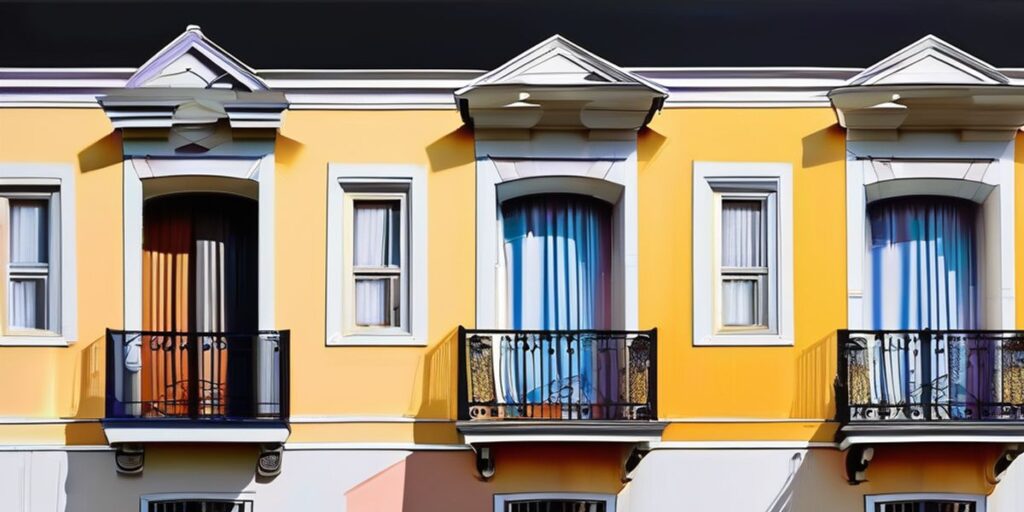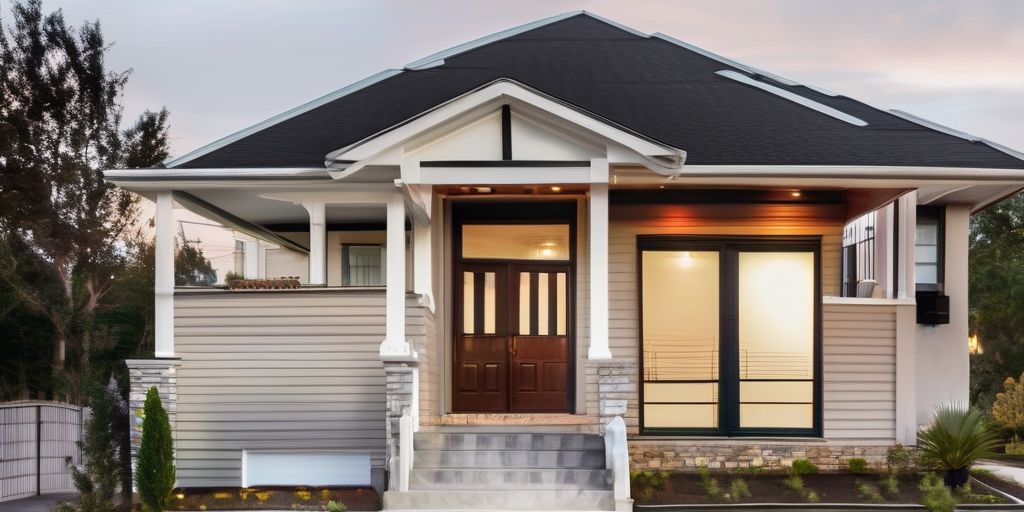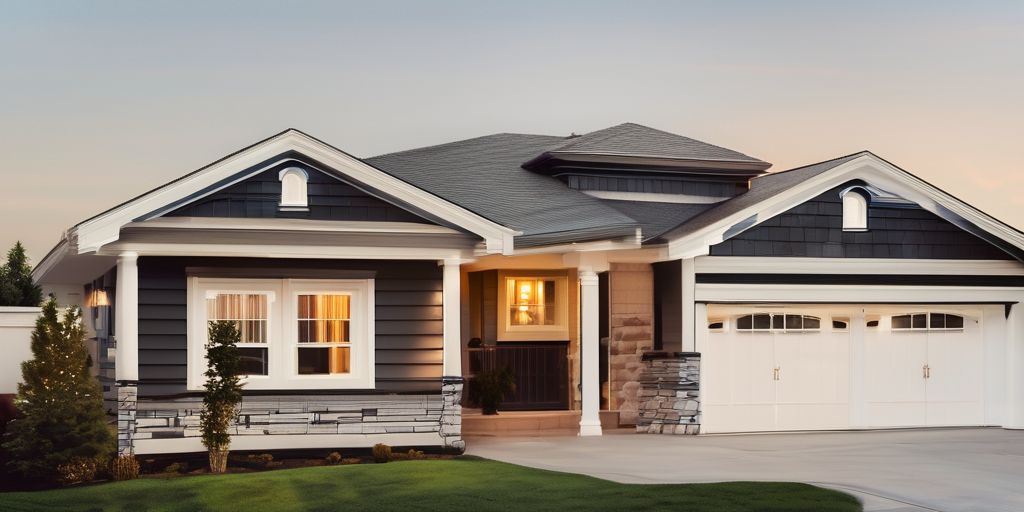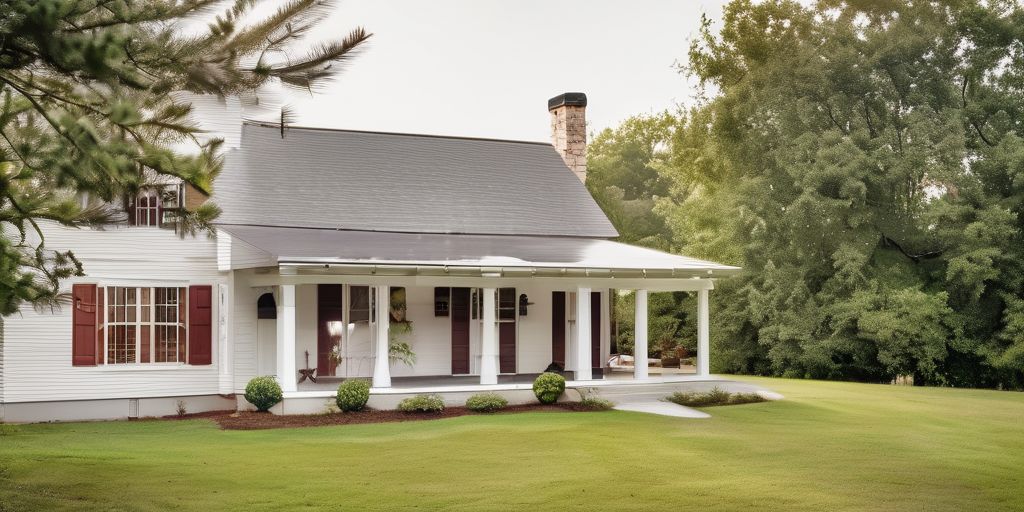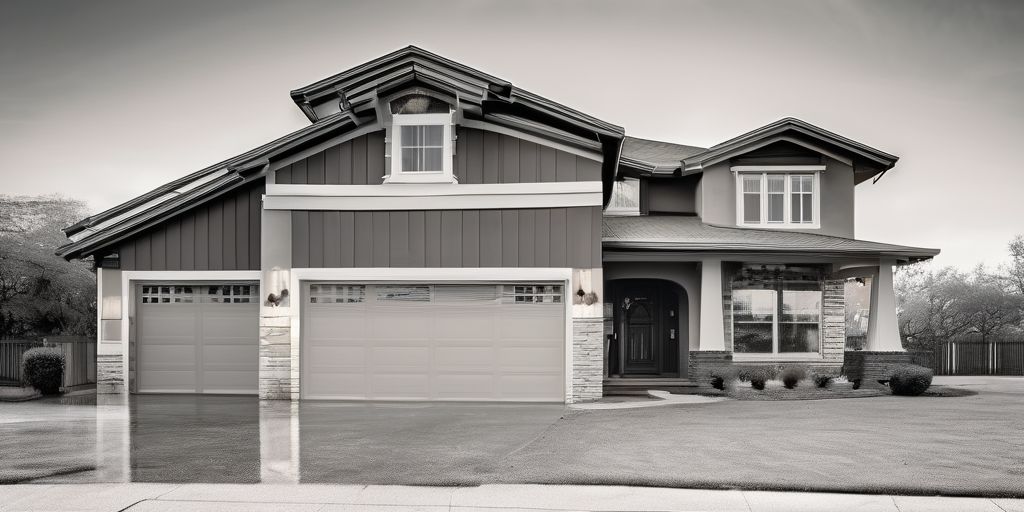When considering a fresh coat of paint for your house in Niagara Falls, spray painting emerges as a modern alternative to traditional methods. This article delves into the intricacies of spray painting your home, evaluating its durability, cost-effectiveness, and environmental impact. With the majestic backdrop of the falls, it’s essential to consider local weather conditions and consult with professionals to ensure that your home not only looks stunning but also stands the test of time and elements.
Key Takeaways
- Spray painting offers a quick and uniform application, making it a time-efficient option for painting your home’s exterior.
- The durability of spray paint on exterior surfaces is influenced by the quality of paint used and the environmental conditions in Niagara Falls.
- Cost analysis reveals that spray painting can be economical, but it’s important to account for hidden costs and potential savings.
- Choosing eco-friendly spray paint options and proper disposal methods can minimize the environmental impact of your paint job.
- Before deciding to spray paint your home, weigh the pros and cons, consider personal style preferences, and seek advice from local Niagara Falls professionals.
Understanding the Basics of Spray Painting Your Home
What is Spray Painting?
Spray painting is a technique where paint is atomized and dispersed in a fine mist using a spray gun or aerosol can. This method allows for even coverage and a smooth finish on a variety of surfaces. Spray painting is particularly effective for covering large areas quickly and can be used for both interior and exterior projects.
Benefits of spray painting include:
-
- Speed and efficiency in application
- Uniform coverage with less chance of brush marks
- Ability to reach difficult spots and angles
When considering spray painting your home in Niagara Falls, it’s important to select paint that is resistant to the local weather conditions. Proper preparation and safety measures, such as adequate ventilation and the use of protective gear, are crucial to ensure a successful outcome.
While traditional methods like brush and roller application have their place, spray painting offers a modern alternative that can save time and potentially reduce labor costs.
Remember to always follow best practices for equipment use and technique to achieve professional results. Whether you’re updating the facade of your home or adding a protective layer, mastering the art of spray painting can make a significant difference in the appearance and longevity of your paint job.
Benefits of Using Spray Paint for Houses
Spray painting offers several advantages for homeowners considering a fresh coat for their house. Here are some key benefits:
- Uniform Coverage: Spray paint provides an even coat, reducing the likelihood of streaks and brush marks.
- Speed: A significant advantage of spray painting is the speed at which a large area can be covered, making it time-efficient.
- Versatility: Suitable for a variety of surfaces, including wood, stucco, and brick.
- Accessibility: Reaches difficult spots with ease, ensuring a complete and consistent finish.
When considering the aesthetic appeal, spray painting allows for a high-quality finish that can enhance the curb appeal of any home.
In terms of maintenance, spray-painted surfaces are often easier to clean and maintain due to the smooth finish. Additionally, the durability of spray paint can protect the home’s exterior from the elements, which is particularly relevant in areas like Niagara Falls where weather conditions can be harsh.
Types of Spray Paint Suitable for Home Exteriors
When considering spray painting your home’s exterior, selecting the right type of spray paint is crucial for both aesthetics and durability. Here are some key points to keep in mind:
- Acrylic latex spray paint is widely recommended for its durability and resistance to fading and chipping. It’s also less susceptible to damage from UV rays and harsh weather conditions.
- Oil-based spray paints are known for their robust finish and excellent adhesion properties. However, they may require more time to dry and can be more challenging to clean up.
- Enamel spray paints provide a hard, glossy finish that is quite durable, making it suitable for surfaces that endure a lot of wear and tear.
It’s important to consider the local weather conditions when choosing spray paint. For instance, in areas like Niagara Falls, where the climate can be quite variable, a paint that can withstand moisture and temperature changes is essential. Additionally, eco-friendly spray paint options are available that offer lower volatile organic compounds (VOCs), which are better for the environment.
When planning your project, always ensure you have the necessary equipment and safety gear. Proper preparation of the surface is key to achieving a long-lasting finish.
Evaluating the Durability and Longevity of Spray Paint
How Long Does Spray Paint Last on Exterior Surfaces?
When considering spray painting your house, one of the key factors is understanding the durability and longevity of the finish. Spray paint, when applied correctly and under optimal conditions, can last for several years. Here are some points to consider:
- Quality of Paint: Higher quality paints tend to have better pigmentation and binders, which contribute to their longevity.
- Surface Preparation: Properly cleaning and priming surfaces is crucial for paint adhesion and longevity.
- Environmental Factors: The local climate, including sun exposure, temperature fluctuations, and moisture, can affect the lifespan of the paint job.
Maintenance is essential to extend the life of a spray-painted surface. Regular cleaning and touch-ups can help preserve the appearance and protection of the paint.
In Niagara Falls, the unique weather conditions, such as mist from the falls and seasonal temperature changes, can influence the maintenance schedule and durability of exterior spray paint. It’s important to consider these local environmental factors when planning your project.
Maintenance and Upkeep for Spray-Painted Homes
Maintaining the appearance and durability of a spray-painted home requires regular attention. Here are some key points to consider for the upkeep of your home’s exterior:
- Regular cleaning is essential to prevent dirt and grime from building up on the surface. A gentle wash with a mild detergent can be effective.
- Inspect the exterior for any signs of peeling or chipping paint. Early detection can save on more extensive repairs later.
- Touch-ups may be necessary, especially in areas exposed to higher wear and tear.
- Protecting the paint from harsh weather conditions can extend its lifespan. In Niagara Falls, this might include safeguarding against moisture from the mist of the falls.
Remember, the longevity of your spray paint job is significantly influenced by the quality of the initial application and ongoing maintenance.
For a more detailed cleaning routine, consider the following steps:
- Repair any leaks or damages that might cause water infiltration.
- Mix a cleaning solution with household bleach and water in a ratio of one-part bleach to five parts water.
- Apply the solution with a spray bottle, taking care not to oversaturate the paint.
- Rinse the surface thoroughly with clean water to remove any residue.
Weather and Environmental Considerations in Niagara Falls
When considering spray painting your house in Niagara Falls, it’s crucial to take into account the unique weather and environmental conditions of the area. The harsh Canadian weather can significantly impact the quality of spray painting on exterior surfaces, especially on elevated structures like high-rise buildings.
- Durability: Choose durable paint that can withstand fluctuating temperatures and moisture levels.
- Preparation: Properly prep surfaces to ensure the best adhesion and longevity of the paint job.
- Application: Apply multiple coats for added protection, and consider the timing of your project to avoid extreme weather conditions.
Maintenance is key to preserving the integrity of a spray-painted home. Regular inspections and touch-ups can extend the life of your paint job, especially in a climate with variable weather like Niagara Falls.
Additionally, specific tips can help when painting in extreme temperatures:
- For hot weather: Stay hydrated, paint during cooler hours, and use light-colored paints to reflect sunlight.
- For cold weather: Use products formulated for lower temperatures, allow extra drying time, and consider a heat source to aid in curing.
Cost Analysis: Is Spray Painting Economical?
Comparing Costs: Spray Painting vs. Traditional Methods
When considering the repainting of your home, it’s essential to compare the costs of spray painting versus traditional brush and roller methods. Here’s a breakdown of the key financial aspects:
- Initial Costs: Spray painting equipment can be more expensive upfront. However, the speed of application often means labor costs are reduced.
- Labor Intensity: Traditional painting is more labor-intensive, potentially leading to higher labor costs over time.
- Coverage: Spray painting provides more uniform coverage with less paint waste.
- Time Efficiency: Spray painting is faster, which can translate into lower overall project costs due to reduced labor hours.
While the initial investment in spray painting can be higher, the efficiency and coverage can lead to cost savings in the long run.
It’s also important to consider the unique environmental factors of Niagara Falls, which may affect the longevity and maintenance costs of your paint job. The mist and moisture from the falls can necessitate more frequent touch-ups for traditionally painted homes.
Budgeting for a Spray Paint Project
When planning to spray paint your house, creating a detailed budget is essential. Consider the entire scope of the project, from the initial preparation to the final touches. Here’s a list to guide you through the budgeting process:
- Surface Preparation: Cleaning, sanding, and priming the exterior surfaces are crucial for a long-lasting finish. Factor in the cost of materials and labor.
- Quality of Spray Paint: Higher quality paint may have a higher upfront cost but can lead to longer intervals between repaints.
- Labor: If hiring professionals, include their fees. DIY can save money but consider the value of your time and potential learning curve.
- Equipment Rental: Scaffolding or lifts may be necessary for multi-story homes.
- Incidentals: Additional costs such as tape, masks, and protective gear can add up.
Budgeting effectively will help you avoid unexpected expenses and ensure that your investment enhances your home’s resale value through improved aesthetics and maintenance. Remember, a well-maintained exterior can increase market value through curb appeal and surface preservation.
Hidden Costs and Potential Savings
When considering spray painting your house, it’s important to look beyond the initial quote to understand the full financial picture. Hidden costs can emerge, but there are also potential savings to be found.
- Preparation Work: Surface preparation may require additional labor and materials, potentially increasing costs.
- Equipment Rental: If not included in the service, renting spray painting equipment can add to the expense.
- Permits: Depending on local regulations, you might need to secure permits, which come with fees.
- Cleanup: Post-painting cleanup might not be included in the initial quote, leading to extra charges.
On the flip side, spray painting can offer savings over traditional methods:
- Material Efficiency: Spray painting uses paint more efficiently, reducing waste and the cost of materials.
- Labor Savings: Faster application means less labor time, which can translate to lower labor costs.
- Longevity: A quality spray paint job can last longer, potentially saving on repainting costs in the future.
While the upfront cost of spray painting might seem steep, the efficiency and potential for reduced future maintenance can make it a cost-effective choice in the long run.
The Environmental Impact of Spray Painting
Eco-Friendly Paint Options
When considering the environmental impact of painting your home, eco-friendly paint options are increasingly becoming the preferred choice for homeowners. These paints are designed to minimize the release of volatile organic compounds (VOCs), which can contribute to air pollution and potential health risks.
- Low-VOC paints: These have reduced levels of volatile organic compounds, making them a healthier choice for both the environment and your family.
- Water-based paints: Known for their easy cleanup and lower environmental impact compared to oil-based alternatives.
- Natural paints: Made from natural materials like clay, chalk, and plant dyes, offering a sustainable option.
Choosing the right type of eco-friendly paint can significantly reduce the carbon footprint of your paint job. It’s important to follow guidelines for optimal painting conditions to ensure the longevity and performance of the paint, especially in areas with specific weather patterns like Niagara Falls.
For homes with aluminum siding, particularly in regions like Kitchener-Waterloo, selecting the appropriate eco-friendly paint can also contribute to better air quality and overall sustainability of the project.
Reducing the Carbon Footprint of Your Paint Job
When considering the environmental impact of spray painting your house, reducing the carbon footprint is a crucial aspect. Here are some steps you can take:
- Choose low-VOC or no-VOC spray paints to minimize harmful emissions.
- Opt for solar-powered spray painting equipment where possible to leverage renewable energy.
- Implement efficient paint application techniques to reduce waste.
By sealing leaks around doors and windows, you not only enhance your house’s energy efficiency but also contribute to a lower carbon footprint.
Remember, every small action contributes to a larger environmental benefit. In Niagara Falls, where the mist from the falls can affect the drying process, it’s especially important to consider the timing and method of your paint application to ensure optimal adherence and minimal environmental impact.
Disposal and Cleanup Considerations
When the spray painting project is complete, proper disposal and cleanup are crucial to minimize environmental impact. Here are some key points to consider:
- Ensure all leftover paint is sealed and stored correctly for future touch-ups or properly disposed of according to local regulations.
- Clean all equipment using eco-friendly solvents and methods to prevent harmful chemicals from entering the water system.
- Use drop cloths and protective sheets during the painting process to collect overspray and debris, which should be disposed of responsibly.
Remember, careful planning of paint quantities can significantly reduce waste and the need for disposal.
If you’re in the Niagara Falls area, consider the proximity to water bodies like the Niagara River when planning your cleanup strategy to protect the local ecosystem.
Making the Decision: Should You Spray Paint Your House?
Weighing the Pros and Cons
When considering whether to spray paint your house, it’s essential to weigh the pros and cons carefully. Spray painting can be a quick and efficient method to refresh your home’s exterior, but it’s not without its drawbacks.
Pros:
- Speed: Spray painting is faster than traditional brush or roller methods.
- Uniform coverage: It can provide even coverage, especially on textured surfaces.
- Accessibility: Reaches difficult areas with ease.
Cons:
- Overspray: Risk of paint drifting onto unintended surfaces.
- Skill required: Requires a steady hand and experience to avoid drips and uneven coats.
- Equipment: Need for specialized equipment and safety gear.
Weather and environmental considerations are particularly important in areas like Niagara Falls, where the climate can be harsh. The longevity of your paint job may be affected by the local weather patterns, necessitating more frequent maintenance.
Before making a decision, consider the aesthetic and practical implications of spray painting your home. It’s not just about the initial appearance, but also about how the paint will hold up over time and the effort required to maintain it.
Personalizing Your Home with Color and Style
Choosing the right color and style for your home’s exterior can be a transformative experience. Spray painting offers a unique opportunity to personalize your living space to reflect your personality and taste. Here are some considerations to keep in mind:
- Color Selection: The color of your home can significantly impact its curb appeal. Consider the architectural style of your house and the surrounding landscape. In Niagara Falls, the vibrant hues of the changing seasons can inspire a palette that complements the natural beauty.
- Style Consistency: Ensure that the chosen colors and finishes align with the overall style of your neighborhood to maintain a cohesive look.
- Creative Expression: Don’t be afraid to express your individuality. A bold accent color on trim or shutters can make your home stand out.
When selecting colors, remember that lighter shades can make a house appear larger, while darker colors can create a more dramatic effect.
It’s essential to choose the right type of spray paint that is formulated for exterior use and can withstand the local climate. Consulting with professionals can provide valuable insights into the latest trends and durable products.
Consulting with Professionals in Niagara Falls
When considering spray painting your house, consulting with local professionals in Niagara Falls can provide valuable insights and help ensure a successful project. Here are some key points to consider:
- Expertise: Professionals have the knowledge and experience to recommend the best type of spray paint for your home’s exterior, considering the local climate and architecture.
- Quality: A professional’s skill can significantly affect the durability and finish of the paint job.
- Cost: They can provide accurate estimates, helping you budget effectively.
- Local Regulations: Professionals are familiar with local building codes and environmental regulations, ensuring compliance.
Before making a decision, it’s beneficial to discuss your project with multiple experts to compare perspectives and services offered. Remember, the unique weather patterns of Niagara Falls, such as mist from the falls, can influence the type of paint and techniques used.
Deciding to spray paint your house is a significant choice that can revitalize your home’s appearance and increase its curb appeal. At We Paint Siding, we offer professional and cost-effective spray painting solutions that have been transforming homes in Ontario for over 15 years. Don’t settle for a dull exterior or costly replacements; choose our expert services for a fresh, long-lasting finish. Visit our website to learn more about our process, view before and after galleries, and book your free estimate today. Let us help you fall in love with your home all over again!
Conclusion
In conclusion, spray painting your house in Niagara Falls offers a blend of advantages and challenges. It’s a quick and cost-effective way to revamp your home’s exterior, providing a uniform coat and a wide range of color options. However, it’s essential to consider the environmental factors unique to Niagara Falls, such as humidity and temperature, which can affect the drying process. Additionally, the potential for overspray and the need for professional equipment and expertise should not be overlooked. Ultimately, whether spray painting is the right choice for your home will depend on your specific circumstances, including the condition of your house, your budget, and your desired outcome. We hope this article has provided valuable insights to help you make an informed decision. Remember, a fresh coat of paint can work wonders for your home’s curb appeal, so choose the method that aligns best with your goals and the unique character of your property.
Frequently Asked Questions
What are the main benefits of spray painting my house?
Spray painting offers a uniform and smooth finish, quick application, and the ability to cover hard-to-reach areas more effectively than traditional painting methods.
How long does spray paint last on a house exterior?
The durability of spray paint on exterior surfaces can vary, but it generally lasts between 5 to 10 years depending on the quality of the paint and the environmental conditions.
Is spray painting my house more cost-effective than traditional painting methods?
Spray painting can be more cost-effective due to its faster application and reduced labor costs, but it’s important to consider the cost of materials and equipment as well.
What types of spray paint are suitable for home exteriors?
Acrylic and latex-based spray paints are commonly used for home exteriors due to their durability and resistance to weather conditions.
Are there eco-friendly spray paint options available?
Yes, there are eco-friendly spray paints available that are low in volatile organic compounds (VOCs) and other harmful chemicals, which minimize the environmental impact.
Should I consult with professionals before spray painting my house in Niagara Falls?
Yes, consulting with professionals is recommended to ensure the paint job is done correctly and to address any weather and environmental considerations specific to Niagara Falls.

